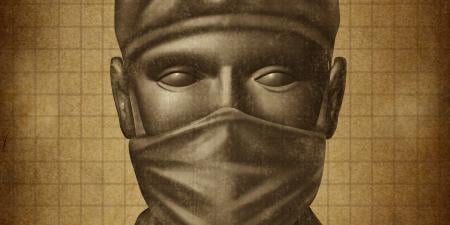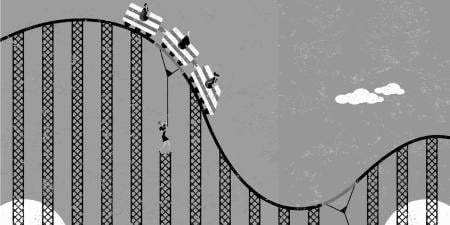Case
Dr. Patel was a pediatrics resident on his ambulatory rotation. Picking up the chart of 15-year-old Julio, he read a lengthy discussion between the previous resident, Dr. O’Neill, and Julio’s mother. Dr. O’Neill reported that as she entered the patient’s room, Julio’s mother had pulled him aside to inform him that Julio and she were HIV-positive. Julio had contracted HIV at birth from her but was unaware of her status or his own. His mother had gone on to tell Dr. O’Neill that Julio had never been hospitalized and had never required antiretroviral therapy. She explained that when he was younger, he was always healthy, so she thought there was no reason for him to know that he carried the virus. She then informed Dr. O’Neill that Julio’s previous pediatrician had respected her wishes not to inform him of his status and she expected this behavior to continue at this new clinic.
Dr. O’Neill reported that she had urged Julio’s mother to change her mind. “You need to tell him about his HIV status. He is old enough to understand now, and I would strongly encourage you to sit down with him and have a discussion about it. The longer you wait, the harder it is going to be to tell him you have been hiding something like this from him for so long.”
The mother had replied that Julio was healthy and happy and had lots of friends at school. As long as he was not ill, she felt no reason for him to think he was different from other kids or to worry about getting sick.
From the documentation, Dr. O’Neill and her supervising attending physicians strongly encouraged Julio’s mother to reconsider her decision. Fearing that she would avoid medical care for her son altogether, however, they decided to respect her wishes until a relationship could be built among the patient, his mother, and the clinic members.
Dr. Patel reviewed Julio’s blood work. His CD4 count was suitably high, so he would not require medications. Entering the patient’s room he was relieved to see that Julio’s mother was not with him on this visit. Dr. Patel encountered a healthy-appearing teenage boy who seemed more concerned about whether he should be using Proactive for his facial acne than about why he was at the doctor’s office again and what his blood work had demonstrated. Dr. Patel was relieved that he would not have to deal with all this HIV business on this visit. Wrapping up, he asked Julio if there was anything else he wanted to discuss.
“Um, by the way doc, I didn’t wanna bring this up last time, because the doctor was a girl and all, but uh, you see, me and my girlfriend, we have been dating for almost a year,” Julio said. “We’ve been getting really serious, and we’ve been talking about having sex. I know that we need to use condoms and I know how to use them from that class we took in school. And my girlfriend, she was gonna talk to her doctor about getting birth control pills. We are both virgins, so I’m not worried about STDs. I was wondering if there is anything else that I should know, you know, to keep us both safe?”
Dr. Patel swallowed hard, he said he needed to speak to his attending and then he would come back and address all of Julio’s questions at once. As he left the room, Dr. Patel knew there was definitely something else Julio needed to know.
Commentary
The presented case study poignantly demonstrates the ethical dilemma Dr. Patel is experiencing while providing care for his new adolescent patient, Julio. Dr. Patel is convinced that Julio has a right to know his HIV status, an assessment that is supported by that of the resident and attending who saw the patient during his first visit to the clinic. Dr. Patel initially seems to also share the other resident’s concern, that posing the demand for disclosure too forcefully to Julio’s mother during this first visit could jeopardize the continuity of care for Julio, and thus avoids a discussion of the need for disclosure. At this visit, however, Julio has shared his, and his presumably HIV-negative girlfriend’s intention to become sexually active, which does not allow further delay of disclosure to wait for the “secure environment in due course.”
Many studies on the optimal timing and psychological impact of disclosure of HIV infection to children and adolescents in a wide range of cultural and socioeconomic settings have been published. Studies from the United States and abroad suggest that children and adolescents who know they are being treated for HIV have higher self-esteem and better acceptance of medical care than youth who are being treated but are unaware of their status. Nondisclosure can result in anxiety, depression, and phobias and excludes youth from peer support groups. Further, most youth in those studies had come to terms with their diagnosis by 6 months post-disclosure. Importantly, parents who disclosed the HIV status to their children experienced less depression and considered disclosure as having an overall positive effect on themselves and their families [1-3]. Reluctance to disclose the HIV status to children and youth is often based on the caregiver’s concern for possible exposure to stigma and discrimination toward the whole family once the adolescent shares the diagnosis with partners, peers, or the public [4-6].
Caregivers identify concerns about unplanned, circumstantial disclosure, HIV transmission, disease progression, interest in a closer, more trusting relationship with the youth, and the respect for the youth’s right to know as reasons for disclosing [7, 8]. With the disclosure, youth are further given the opportunity to identify role models, voice their needs more effectively, and gain experience in disease management by interaction with other HIV-positive peers. Despite the threat of possible stigmatization, several studies have emphasized the positive correlation between HIV diagnosis disclosure and social support [9, 10].
It is on this basis that the American Academy of Pediatrics strongly recommends the disclosure of HIV status to adolescents [11]. Parents and other guardians of a child with HIV should be repeatedly counseled about disclosure, which should be individualized to the cognitive ability, developmental stage, clinical status, and social circumstances of the child. Fears and misperceptions of HIV infection should be addressed, and disclosure of HIV infection status to school-age and symptomatic children is strongly recommended. All adolescents should know their status and be fully informed about all aspects of their health, including their sexual behavior, with physicians encouraging adolescents to involve their parents in their care.
It is apparent from the vignette that a discussion of disclosure should have been a priority during Julio’s second visit. Ultimately, Julio is the patient, and adolescents have the right to confidential care from physicians, especially when sensitive subjects such as sexuality, substance use, and mental health care are involved. The physician must find a way to protect the health of Julio and his potential partner—hence, an open discussion with the mother is not the only route to addressing the urgent need for disclosure to Julio, particularly in face of his mother’s continued opposition. Those who care for adolescents must advocate for their patients and support timely disclosure of HIV diagnosis, since they are aware of the negative effects of non-disclosure, which include social isolation, the lack of coping skills, anxiety, loss of trust, and depression. Disclosure has also been shown to be associated with slower disease progression, probably due to the reduction of stigma and the improvement of coping skills [12].
Since Julio has clearly voiced his intention to become sexually active, confidential HIV testing for him and his partner can be offered, and all scenarios, including behavioral and perinatal and blood-product-related acquisition of HIV can be discussed. In this situation, Dr. Patel is primarily responsible for the youth in his care and all decisions made should be in Julio’s best interest. Dr. Patel should consider the wishes of the parent only in this context and attempt to have the parent agree to disclosure without sharing confidential information, such as Julio’s intention of initiation of sexual activity. Dr. Patel can discuss with Julio’s mother his right to have all of his questions truthfully answered. It could also be helpful to explore the parent’s understanding of confidentiality in the relationship between the physician and the adolescent patient. Studies have shown that parents commonly have the false expectation that physicians who learn about potential risk behavior on the part of an adolescent will tell the adolescent’s parents [13].
With teens, the discussion of non-behavioral modes of HIV transmission—perinatal and transfusion-related—should emphasize that it is responsible to pursue testing for HIV. The teen has the right to initiate this testing by himself and is entitled to receive the results in a confidential manner, even without the parent, if he chooses to do so. Regardless of whether or not Julio and his partner choose to get HIV tests, he should be provided with safer-sex information and encouraged to use a condom.
Parents often underestimate the youth’s ability to handle the disclosed information and may be overly concerned about possible psychological harm to their child or their child’s adversarial reaction toward them. The possible feelings of guilt in the setting of perinatal HIV infection can be addressed with the mother, possibly with support from a consumer advocate or counselor. A study reported in 2008 that women are interested in taking a leading role in the disclosure of perinatally acquired HIV infection to children and youth ages 5 to 18 years [14]. The possible parental concern that disclosure could interfere with Julio’s quality of life could have been discussed with reference to results from a study among children and adolescents with perinatally acquired HIV infection, which showed no statistically significant differences between pre-disclosure and post-disclosure quality of life [15].
Some reports have suggested that diagnostic disclosure may not minimize emotional distress, indicating the need for further evaluation of the appropriate timing and type of disclosure for pediatric patients living with HIV infection [16]. The association of perceived HIV-related stigma with the decision to disclose the HIV status to children and youth 5 to 18 years had been studied by other investigators, using questionnaires and guided interviews for HIV-infected women who had been recruited from AIDS service organizations located in large Midwestern cities. In this cohort, the total score for perceived stigma among mothers who disclosed did not differ from the total score for those who did not [17].
An open discussion of the evidence stated above may be entirely sufficient to convince Julio’s mother that disclosure as soon as possible is the most appropriate way to move forward. The option of disclosure with the physician or a consumer advocate taking the lead should also be offered. Since many HIV-positive youth perceive their health problem, even though it is an unspoken family secret, asking Julio about his understanding of the medical condition would be a legitimate approach under the circumstances and should be pursued with every adolescent age 16 and above, even against the parental wishes. Likewise, exploring the parental perception of the adolescent’s existing understanding may keep the parent engaged and could well lead to the agreement to ask Julio directly about what he knows and thinks about his medical condition.
The overdue disclosure should be viewed as the first step in the process of diagnosis acceptance. Ideally this should have been a gradual, process-oriented introduction to living with HIV infection, based on his individual family culture, family dynamics, and established physician relationship, but not on the short timeline presented in the vignette. A validated instrument used by health care professionals to support parental HIV disclosure is the parent disclosure interview (PDI). The core components of this structured interview are questions about disclosure, reasons for non-disclosure and plans for the child’s future, which can help to reveal the parents’ history and attitudes toward disclosure [18]. As observations from the Swiss Mother and Child Cohort Study among perinatally infected adolescents show, discussion of disclosing the adolescent’s HIV status to sexual partners and friends can lead to ongoing conflict between the adolescent and the parent who fears that her own HIV status will become known or that the disclosure will have repercussions for the family [19]. Not disclosing one’s HIV infection, however, can be viewed by the teen as burden and can lead to further stigmatization. After having learned about their HIV status, adolescents may themselves not disclose to partners and friends out of concern for rejection, but also out of a sense of loyalty to their families. Dr. Patel should be prepared to continue his dialogue with Julio and, if he wishes, his mother.
References
- Blasini I, Chantry C, Cruz C, et al. Disclosure model for pediatric patients living with HIV in Puerto Rico: design, implementation, and evaluation. J Dev Behav Pediatr. 0425;25(3):181-189.
- Gerson AC, Joyner M, Fosarelli P, et al. Disclosure of HIV diagnosis to children: when, where, why, and how. J Pediatr Health Care. 2001;15(4):161-167.
- Cohen FL. Research on families and pediatric human immunodeficiency virus disease: a review and needed directions. J Dev Behav Pediatr. 1994;15(3 Suppl):S34-S42.
- Murphy DA, Roberts KJ, Hoffman D. Stigma and ostracism associated with HIV/AIDS: children carrying the secret of their mothers’ HIV-positive serostatus. J Child Fam Stud. 2002;11(2):191-202.
- Ingram D, Hutchinson SA. HIV positive mothers and stigma. Health Care Women Int. 1999;20(1):93-103.
- Nostlinger C, Jonckheer T, de Belder E, et al. Families affected by HIV: parents’ and children’s characteristics and disclosure to the children. AIDS Care. 2004;16(5):641-648.
- Wiener L, Mellins CA, Marhefka S, Battles HB. Disclosure of an HIV diagnosis to children: history, current research, and future directions. J Dev Behav Pediatr. 2007;28(2):155-166.
- Lesch A, et al. Paediatric HIV/AIDS disclosure: towards a developmental and process-oriented approach. AIDS Care. 2007;19(6):811-816.
- Lesch A, Swartz L, Kagee A, et al. Parental views on disclosure of diagnosis to their HIV-positive children. AIDS Care. 2003;15(2):169-176.
- Smith R, Rossetto K, Peterson BL. A meta-analysis of disclosure of one’s HIV-positive status, stigma and social support. AIDS Care. 2008;20(10):1266-1275.
-
American Academy of Pediatrics Committee on Pediatrics AIDS. Disclosure of illness status to children and adolescents with HIV infection. Pediatrics. 1999;103(1):164-166.
- Ferris M, Burau K, Schweitzer AM, et al. The influence of disclosure of HIV diagnosis on time to disease progression in a cohort of Romanian children and teens. AIDS Care. 2007;19(9):1088-1094.
- Lyren A, Kodish E, Lazebnik R, O’Riordan MA. Understanding confidentiality: perspectives of African American adolescents and their parents. J Adolesc Health. 2006;39(2):261-265.
- Delaney RO, Serovich JM, Lim JY. Reasons for and against maternal HIV disclosure to children and perceived child reaction. AIDS Care. 2008;20(7):876-880.
- Butler AM, Williams PL, Howland LC, et al. Impact of disclosure of HIV infection on health-related quality of life among children and adolescents with HIV infection. Pediatrics. 2009;123(3):935-943.
- Lester P, Chesney M, Cooke M, et al. When the time comes to talk about HIV: factors associated with diagnostic disclosure and emotional distress in HIV-infected children. J Acquir Immune Defic Syndr. 2002;31(3):309-317.
- Ostrom RA, Serovich JM, Lim JY, Mason TL. The role of stigma in reasons for HIV disclosure and non-disclosure to children. AIDS Care. 2006;18(1):60-65.
- Pilowsky DJ, Sohler N, Susser E. The parent disclosure interview. AIDS Care. 1999;11(4):447-452.
- Michaud PA, Suris JC, Thomas LR, Kahlert C, Rudin C, Cheseaux JJ. To say or not to say: a qualitative study on the disclosure of their condition by human immunodeficiency virus-positive adolescents. J Adolesc Health. 2009;44(4):356-362.



